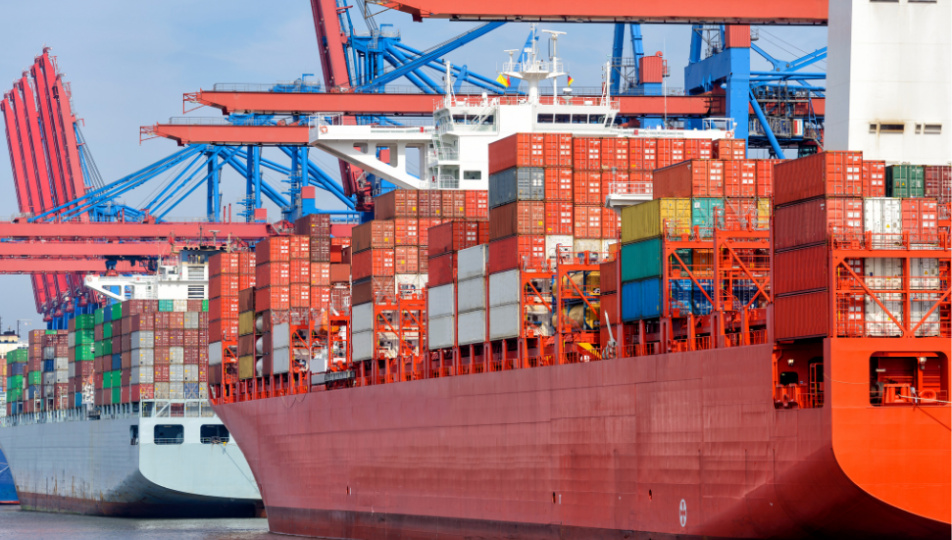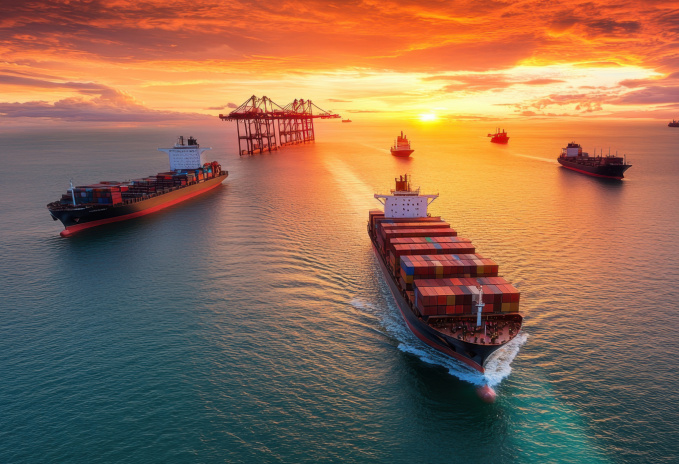The IMO 2020 regulation is just the beginning. Further targets are set for 2025 and 2050

2020, 2025, 2050 - Three important dates regarding the world's fleet of ships. In 2020 IMO (as per its IMO 2020 regulation) plans to switch to low sulphur fuels with a maximum sulphur content of 0.5% (the current 0.1% content in special areas is unchanged).
2020, 2025, 2050 - Three important dates regarding the world's fleet of ships. In 2020 IMO (as per its IMO 2020 regulation) plans to switch to low sulphur fuels with a maximum sulphur content of 0.5% (the current 0.1% content in special areas is unchanged).
The year 2025 will bring new regulations on ship energy efficiency (at least 30% more efficient than ships built before 2014) and a reduction in greenhouse gas emissions. By 2050, the IMO wishes to reduce greenhouse gas emissions by 50% compared to the 2008 reference year. All these efforts are very ambitious given the current uncertainty of meeting the 2020 target. Shipowners and shipowners are now faced with a decision on which technological direction to take to meet IMO targets. They have several options and this article summarises the main technological trends.
LSFO
As 2020 approaches, the majority of the world's shipping fleet is expected to switch to so-called Low Sulphur Fuel Oil, LSFO for short, a new generation of low sulphur fuels that will meet the new IMO 0.5% sulphur limit. This fuel is currently produced by all major marine fuel suppliers, but it is in the stars if it will be available in sufficient quantities worldwide by early 2020.
LSFO is more technically demanding to produce and retains more catalytic fines that damage marine engines with prolonged use. However, this can be avoided by proper selection and use of additives. Because of their different properties (density, viscosity and flash point), different fuels from different manufacturers will not be able to be mixed and the storage temperature and engine settings will have to be more adapted to each fuel than they have been to date.
Moreover, as shippers are reluctant to buy and use new fuels before 2020 due to their higher cost, more problems and accidents caused by improper handling of new fuel can be expected during the mass switchover at the end of 2019.
Bio-fuels
The blending of organic ingredients into fuels has also arrived in shipping. The second generation of bio fuels is fully compatible with existing marine engines and the manufacturer declares that the new fuels will lead to a CO2 reduction of 80 to 90% and no sulphur oxides are released when they are burned. The fuels are also suitable for direct combustion without the need for mixing with fossil fuels. Biofuels are produced simultaneously by several companies and use different types of waste products to produce them, from cooking oil to wood industry waste.
Obviously, this will only be a marginal fuel, as the supply of biofuels will never be able to meet demand. But the fact that this is not just an experimental fad is evidenced by the interest of major shipowners in testing biofuels - names like Maersk, CMA-CGM and Jumbo Shipping speak for themselves.
Single fuel engines
While marine engine manufacturers are trying to achieve as much fuel flexibility as possible (engines that run on both high and low sulfur fuel oil and "regular" diesel), Japan Engine Corporation is developing a two-stroke marine engine using only diesel fuel, which is very similar to that used in automobiles. This diesel is still used on ships today to power electric generators and the entire ship in areas where there are strict restrictions on sulphur and nitrogen oxide emissions - such areas include the North European SECA (Sulphur Emission Control Area) and the North American ECA (Emission Control Area). Currently, the two most widely used diesel types are referred to by the abbreviations MGO and MDO.
Marine Gasoil is essentially pure diesel without impurities and Marine Diesel Oil is a mix of diesel and heavy fuels. The advantage of diesel fuel is that it does not release sulphur oxides when burned and does not need to be heated and treated before use in a marine engine, unlike fuel oil. This makes a diesel-only engine simpler and more energy efficient. This type of engine is suitable for smaller to medium sized ships with lower fuel consumption as diesel prices are and will be higher than other fuels (LNG, HFO & Scrubber..).
Scrubbers
The scrubber - the exhaust gas cleaner - is gaining in popularity as 2020 approaches. It is a module, installed on the ship's stack, that cleans the sulphur oxides from the exhaust produced by the engine. The whole system works by passing the exhaust gases through a system of seawater nozzles and installations containing alkaline materials (limestone and sodium hydroxide are used) in a scrubber to neutralise the sulphur oxides and remove the remaining particulate matter.
This process produces sulphate salts that are not harmful to the environment and can be discharged into the sea or stored in tanks and discharged into the port treatment plants. Thanks to this 'scrubber', current heavy fuels with a higher sulphur content, so-called HFO - Heavy Fuel Oil - can continue to be used. Scrubbers would thus be an elegant solution to the problem of sulphur oxide emissions were it not for the following disadvantages. First of all, scrubbers are relatively expensive and time-consuming to install, requiring the ship to be laid up at the dock for several weeks.
Another problem is the availability of HFO itself. It is expected that most ships will switch to LSFO, which will lead to a reduction in HFO production and also make this type of fuel less available. The actual discharge of scrubber water into the sea is also debatable. Advocates of this method argue that the world's oceans can easily contain and dissolve the waste from scrubbers installed on potentially all ships in the current world fleet. Opponents argue that this claim is unsupported by proper research and is just postponing the solution to the problem - we will not be dumping sulphur into the air, but into the water...
LNG vessel
LNG (Liquefied natural gas) is now a very popular fuel, which is the focus of more and more research, and LNG propulsion systems are already being installed on various types of ships. This solution is particularly suitable for larger ships that have enough extra space to store fuel tanks and have higher fuel consumption, as LNG is cheaper than other fossil fuels. Another indisputable advantage of this type of propulsion is the elimination of sulphur oxides and particulate emissions and the reduction of CO2 emissions, which holds great promise for the future, especially in view of 2050, when the IMO plans to operate the entire world fleet without carbon.
Diesel fuel must still be used to power the electric generators, but this too can be reduced by installing a so-called Shaft Generator, which generates electricity from the rotation of the shaft connecting the main engine to the propeller. Current LNG engines are so-called Dual Fuel, i.e. capable of burning both LNG and HFO/ULSFO. LNG is not self combusting, so diesel fuel or fuel oil must be used as pilot fuel, usually in a ratio of 95% LNG / 5% pilot fuel. Some ships use what is known as Boil-off gas, which naturally forms in LNG tanks to heat the boilers, which then produce steam that powers the ship.
It is estimated that within the next forty years, the majority of the world's fleet will switch to LNG propulsion. Already today, ships are being converted to this type of propulsion, bunkering infrastructure is being built and procedures for loading and storing this fuel on board are being improved - in particular bunkering. A certain disadvantage of LNG is the need to install relatively large and well-insulated tanks that will keep LNG subcooled at the required temperature of -162 degrees Celsius. To give you an idea, a feeder with a capacity of 342 TEUs will lose space for 6 TEUs by installing an LNG system.
The combustion of LNG produces methane, which is a greenhouse gas, and therefore there are concerns that this route will certainly not reduce greenhouse gas emissions.
Yacht
The IMO's 2050 deadline and the unofficial competition between large corporations and shipowners to operate the most environmentally friendly ships is encouraging experimentation with an old technology for powering ships, which is, of course, wind and sail. Some companies, priding themselves on their environmentalist credentials, are already using sailboats to transport their products.
These are of course smaller cargo volumes over shorter distances, almost exclusively along the coast. However, there are much larger, modern cargo sailing ships in the planning stage and even already under construction. Two of these are being built by Neoline in a French shipyard. These will be 136-metre-long Ro-Ro sailing ships, capable of carrying a cargo of up to 500 cars. A collaboration with Renault is under negotiation, which would like to deploy these vessels on liner service between Europe and the US.
The ships will be equipped with solar panels and a hydrogen-powered backup engine. But there are already clear factors that will limit this mode of transport. The main problem is, of course, the wind, which must be stable and relatively strong. Only a few ocean routes offer such conditions, especially on the Atlantic, so it will not be possible to run a stable ocean-to-ocean service. The second factor is the erratic speed of sailing ships, which will make port arrival times less reliable.
Electric energy
It is already practically working on smaller ferries in Norway. Suitable only for smaller boats and shorter routes.
Not only car transport but also maritime transport is at a crossroads. Everyone knows something has to happen, but no one is sure which way is the right way. The investment in low- or zero-emission operation is massive and every company will calculate the return on the equipment chosen.


